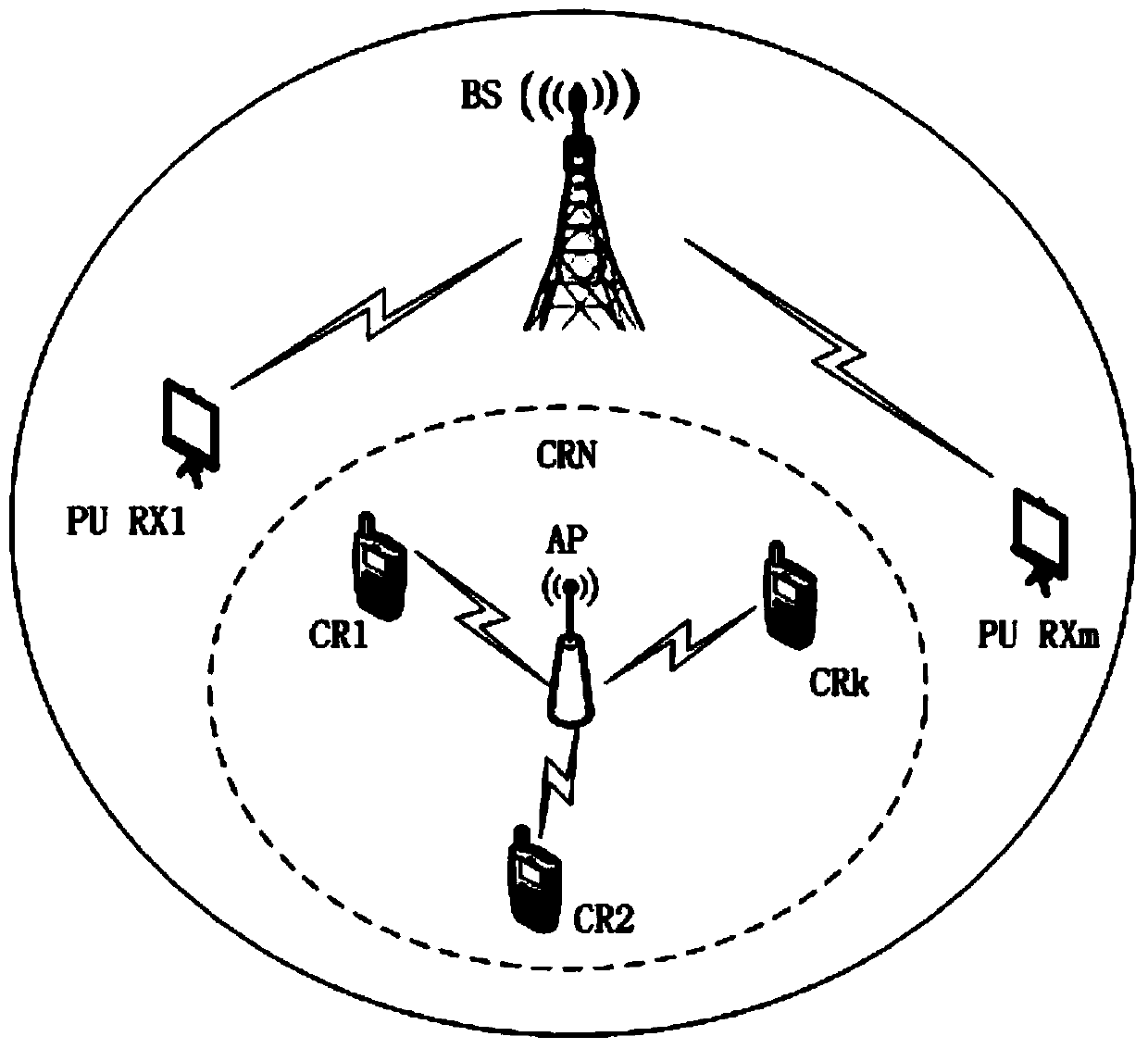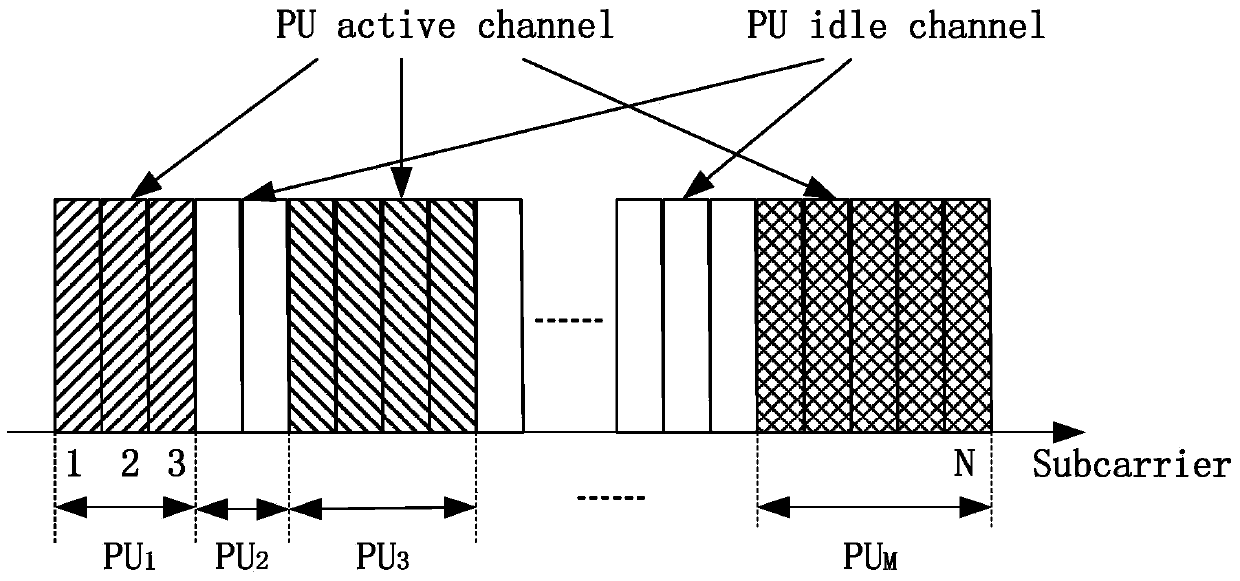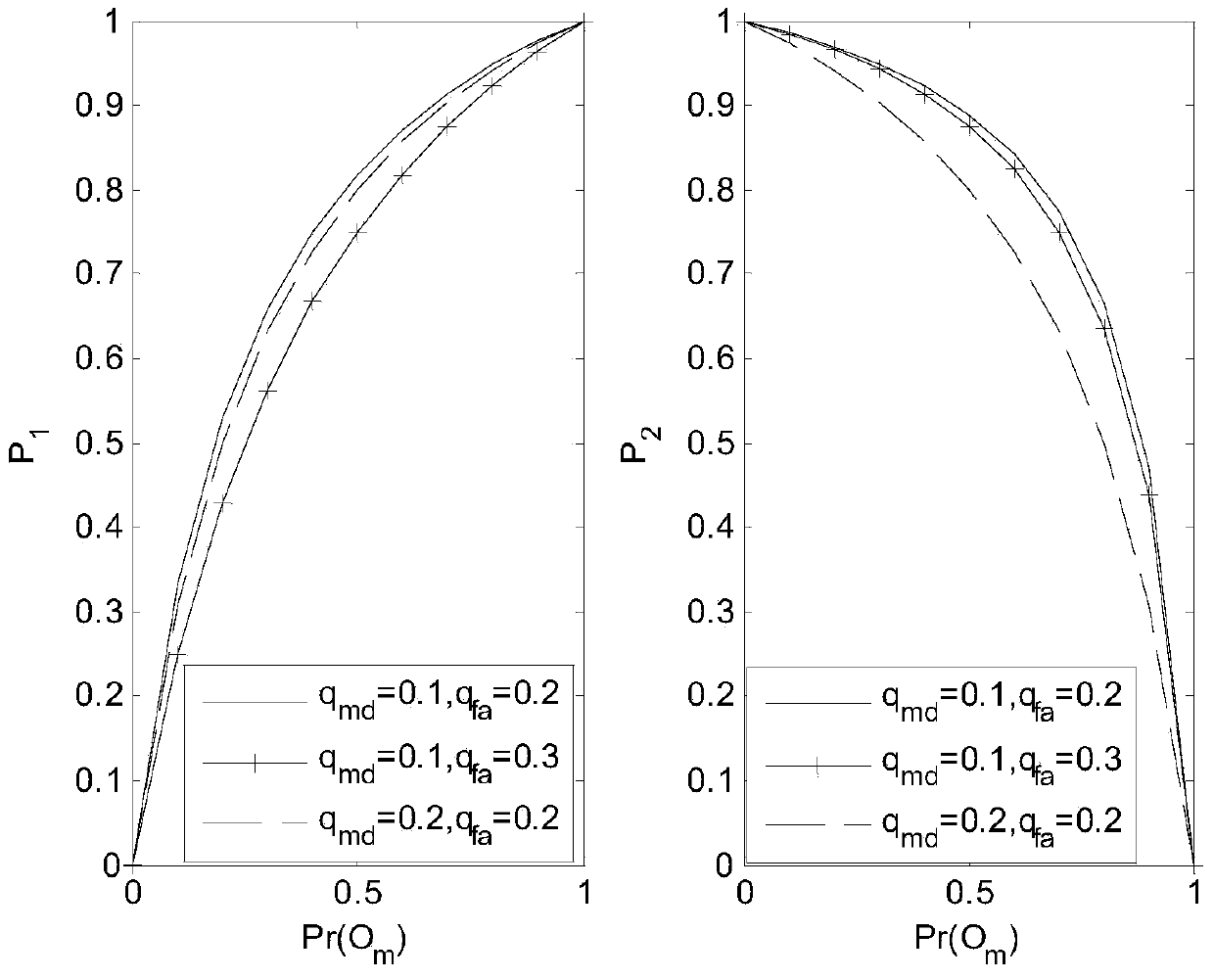Component channel and power distribution method for cognition OFDM (orthogonal frequency division multiplexing) system
A sub-channel and power technology, applied in the field of sub-channel and power distribution, can solve the problems of increased delay, less consideration of system impact, and reduced throughput, so as to reduce switching frequency, improve throughput, and reduce switching delay. Effect
- Summary
- Abstract
- Description
- Claims
- Application Information
AI Technical Summary
Problems solved by technology
Method used
Image
Examples
Embodiment
[0023] like figure 1 As shown, it is a typical cognitive wireless network model. In this cognitive network, there are K cognitive users in total, including K1 delay-sensitive users (DS-CRs) and K2 delay-tolerant users (DT-CRs). Each delay sensitive user has a different minimum rate requirement, while for delay tolerant users it is assumed that there are sufficient packets to transmit.
[0024] The available bandwidth of the entire authorized user system is divided into N sub-carriers, these N sub-carriers are shared by M authorized users, and each authorized user sub-channel is composed of one or more sub-carriers, which do not overlap each other, such as figure 2 shown. It is assumed that each authorized user sub-channel is a flat fading channel, and the traffic patterns of each authorized user are independent of each other. Each OFDM symbol has a length of T s , the scheduling unit of the resource allocation algorithm is a symbol period, that is, at the beginning of eac...
PUM
 Login to View More
Login to View More Abstract
Description
Claims
Application Information
 Login to View More
Login to View More - R&D Engineer
- R&D Manager
- IP Professional
- Industry Leading Data Capabilities
- Powerful AI technology
- Patent DNA Extraction
Browse by: Latest US Patents, China's latest patents, Technical Efficacy Thesaurus, Application Domain, Technology Topic, Popular Technical Reports.
© 2024 PatSnap. All rights reserved.Legal|Privacy policy|Modern Slavery Act Transparency Statement|Sitemap|About US| Contact US: help@patsnap.com










